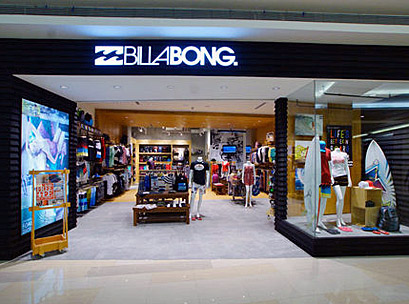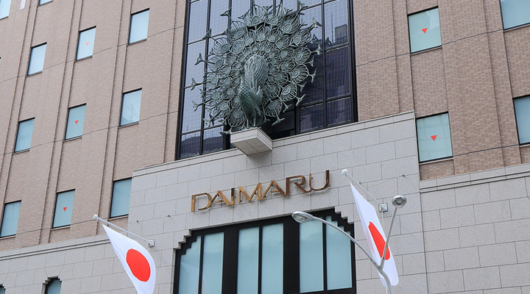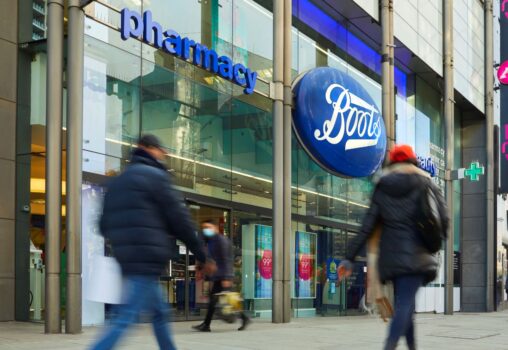 Billabong’s overseas markets have given the surfwear retailer a boost, while APAC remains a problematic area for the surfwear retailer.
Billabong’s overseas markets have given the surfwear retailer a boost, while APAC remains a problematic area for the surfwear retailer.
Addressing shareholders at the company’s AGM this morning, Billabong chair Ian Pollard reported EBITDA for the year of $51.1 million was up 2.8 per cent on a constant currency basis, less than a million dollars below the guidance range provided at the 2016 AGM and affirmed again in February.
The result allows for the sale of Tigerlily while the company reported a Net Loss Before Tax of $8.4 million, excluding significant items and discontinued businesses.
The APAC region dropped 28.3 per cent in EBITDA for the year while in the company’s largest region, the Americas, Billabong recorded 46.9 per cent EBITDA growth on a constant currency basis.
“By any measure this is an outstanding outcome in the face of tough market conditions” said Pollard on the Americas result.
“We are confident that this improvement is not an isolated result but part of a sustained turnaround in a region that has been described as our greatest opportunity.”
The European region overcame a soft first half to post full year EBITDA growth of 8.9 per cent, representing the fourth consecutive year of EBITDA improvement in Europe, with expectations of a fifth year of improvement in FY18.
Billabong did not declare a dividend for the financial year and expects the FY18 EBITDA to exceed the FY17 EBITDA of $51.1 million.
Managing director Neil Fiske said the retailer’s first half was weighted toward APAC and the retail channel, the second half toward the Americas and the wholesale channel.
“The earnings profile of the company has shifted substantially to the second half, a trend we expect to see again in the year ahead,” he said.
The retailer’s main brands, Billabong, Element, and RVCA, now comprise 91 percent of our external wholesale sales.
“At our last AGM, we set some ambitious goals for the balance of the 2017 financial year. We achieved those and came in just shy of our guidance – despite a very challenging environment, particularly here in Australia,” said Fiske.
“It is worth repeating: two of our three regions performed well last year – the Americas and Europe. APAC fell short, some of it due to macro conditions and some of it from our own execution issues, which we are correcting.
“Where we fell short was in Asia-Pacific, and most acutely in Australia,” said Fiske.
“We certainly confronted tough macro conditions last year. Reports of retail weakness in Australia were widespread in a year marked by a number of retail chain closures, declines in mall traffic, and heavy discounting. All of these factors weighed on our result. Still, we can do better. We had some misses on product and on sales execution, and we needed to make some leadership changes. We have responded to these issues – and the early positive signs we are seeing in the market give me confidence that we are on the right path.”
Fiske acknowledged that the retailer is digitally underdeveloped in the APAC market – at 1.9 percent of e-commerce sales compared with the Americas at 7.4 percent.
“This is a big opportunity for us,” he said.
“We have hired experienced leaders for both our mono-brand and multi-brand web businesses, have staffed up the teams and are investing much more aggressively this year to accelerate growth, especially in mobile.”
Over the past week, Billabong has launched the first of a series of websites on a new, e-commerce platform, first with Surf Dive and Ski to be followed by other websites in the next financial year.
“Australia will be the region of first deployment for the broader set of omni channel platform initiatives – which include modernised systems for our retail stores, a state of the art customer direct marketing capability, and a new digital platform to support the wholesale channel,” said Fiske.
“The future of retailing lies in being seamlessly omnichannel – with stores, e-commerce, social media and customer database marketing all connected together to give us one integrated view of our customers while allowing them to shop the way they want to shop
“Brick and mortar stores are very much part of that future. However, consumers demand they be better merchandised, easier to shop, and more engaging. Less clutter, more wow factor. Here too we are making progress.”
Access exclusive analysis, locked news and reports with Inside Retail Weekly. Subscribe today and get our premium print publication delivered to your door every week.





